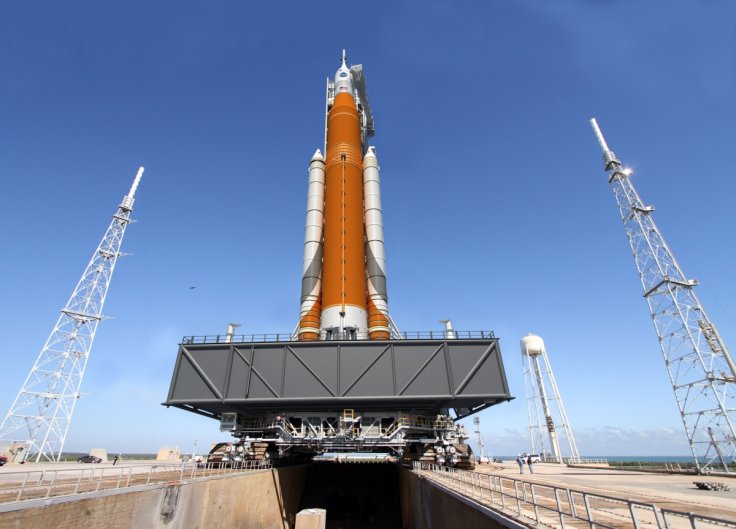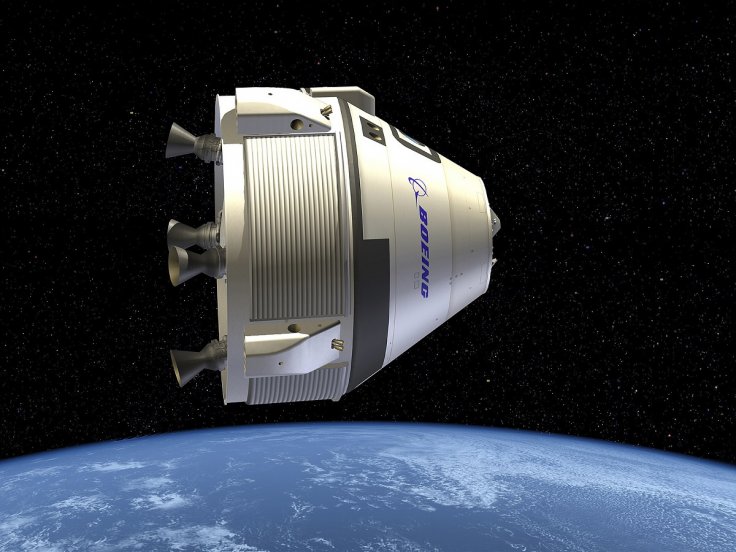The National Aeronautics and Space Administration (NASA) is building the most powerful rocket ever made to send humans back to the Moon by 2024. The new launch vehicle named Space Launch System (SLS) is nothing like NASA's previous projects.
It has a combined thrust capacity of over eight million pounds and is capable of carrying over 154,000 pounds (70,000 kilograms) of payload, more than the Saturn V that took humans to the Moon for the first time. But such a monster of a rocket is bound to face problems and SLS isn't immune. It has seen cost overruns and delays and now the software integration is causing concerns.
The SLS is a multi-staged vehicle that is being developed by multiple vendors. And that's where the problems start. Although NASA expects the engineers to pull off the job of manufacturing the rocket, integrating all the components of the SLS through software is what some agency officials are concerned about. The software which is being developed by NASA at the Marshall Space Flight Center in Huntsville, Alabama, will eventually control everything.

The United Launch Alliance is building the upper stage while Lockheed Martin is responsible for the Orion spacecraft which will host the crews. Aerojet Rocketdyne is building the RS-25 engines and Northrop Grumman is manufacturing the side boosters. Finally, Boeing is responsible for the core stage of the launch vehicle. All those stages will be integrated by a single piece of software to keep everything in sync.
Software Issues
However, as the launch date nears, NASA's concerns about the software have only grown. At a meeting of NASA's Aerospace Safety Advisory Panel (ASAP), Paul Hill, a member of the committee expressed his concerns, saying that "panel has great concern about the end-to-end integrated test capability and plans, especially for flight software," the Washington Post reported.
The problem is not in the codes but the way it is being developed. The software is being developed in multiple labs with hardly any synchronization between them. The separate labs are using different emulators and simulations to test the "subsets of the software". Hill said that it should have been developed in a comprehensive manner for flight simulation.
"As much as possible, flight systems should be developed for success, with the goal to test like you fly. In the same way that NASA's operations teams train the way you fly and fly the way you train," Hill told Washington Post.

No Lessons Learned
NASA's past experience in software is also not a confidence booster. In December 2019, Boeing's Starliner spacecraft failed in its first unmanned mission. It could not dock with the International Space Station (ISS) due to incorrect timing in the software. The spacecraft burnt excessive fuel before reaching the ISS and the ground station had to bring it back.
There were multiple software problems with the spacecraft. However, the problem was not in coding but with project oversight. The U.S. Government's Accountability Office (GAO) in a report last year said that NASA and Boeing "underestimated the complexity of manufacturing and assembling the core engine stage section."
NASA on its part also held Boeing accountable. In a report in March 2020, NASA said that it identified 49 issues in Boeing's testing while there were at least 61 problems in Starliner's software that needed to be corrected. Doug Loverro, then NASA's Associate Administrator for Human Exploration and Mission Operations said, "We could have lost a spacecraft twice during this mission. So clearly this was a close call." However, he abruptly resigned in May days before SpaceX successfully launched two astronauts to the ISS.

The main problem with the software was that Boeing used an emulator instead of the actual hardware during the test. The emulator was designed to imitate the hardware module but had the wrong configuration of the thrusters. The serious lack of oversight prompted NASA to take test SLS software in-house without relying on the vendors. But if the SLS software too lacks oversight, it could culminate in NASA's most expensive mistake.
'Mission on Course'
However, despite the concerns, NASA has said that the mission is on course and everything will be sorted out in time for the next launch. The first mission for the SLS is Artemis I. It will carry an unmanned Orion space capsule by the end of 2021.
NASA has pushed Hill's panel findings aside, saying that it has put rigorous checks on the software front and the vendors are "conducting integrated end-to-end testing for the software, hardware, avionics and integrated systems needed to fly Artemis missions."









